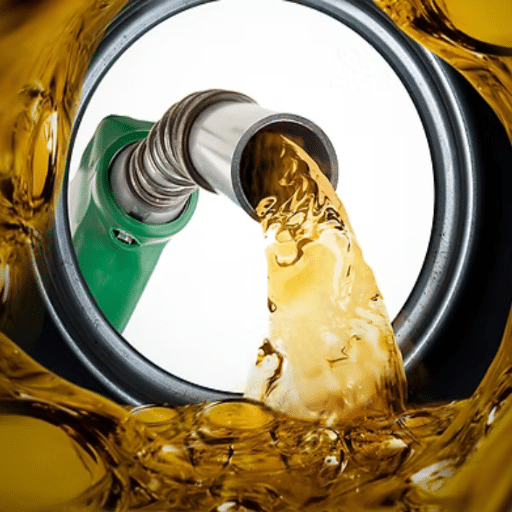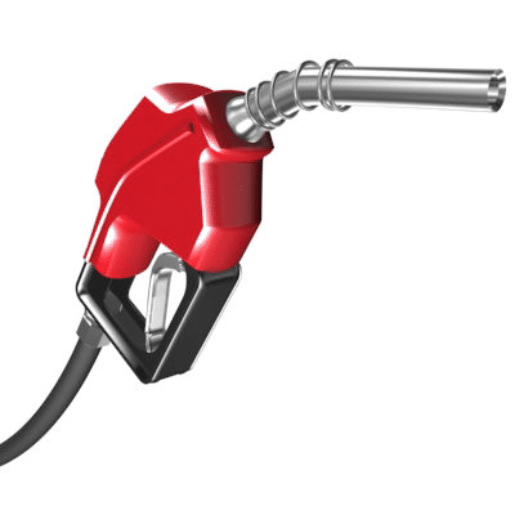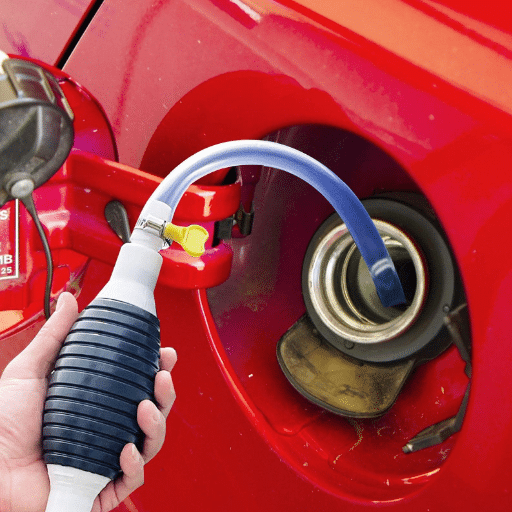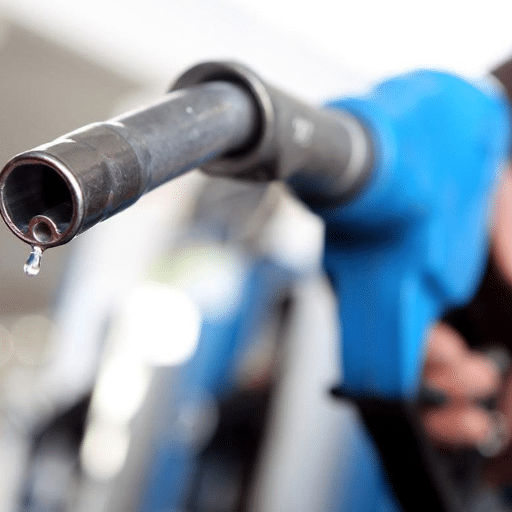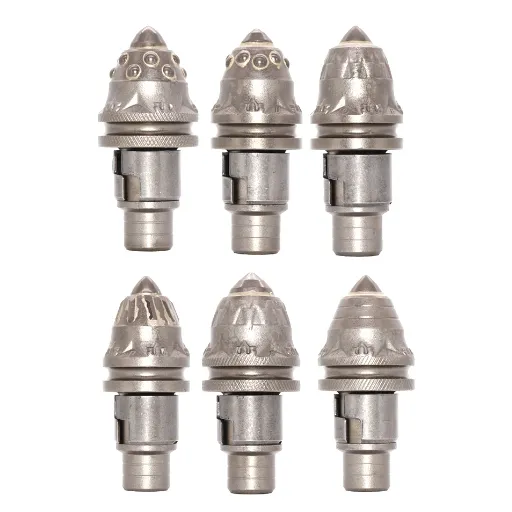Fuel dispensing and nozzle dispensing products are a great distraction from everyday life. Behind the scenes, on a normal day, does one ever stop and wonder what actually takes place? Engineering, technology, and precision come together with awesome harmony in gas pumps from the moment you pluck the nozzle to the click that lets you know your tank is full. This guide takes you through a tour of the fuel dispenser’s inner workings. It explains the components, procedures, and safety mechanisms that make them reliable and efficient. Whether it’s a curiosity about how sensors prevent overfilling or about how fuel enters and is measured properly, this exhaustive insight would satiate your curiosity. Get comfortable, and let’s dive into the science and brilliance behind gasoline pumps!
Understanding the Basics of Gas Pumps

The theoretical definition of fuel pumps is that they serve to transfer fuel from a below-ground storage tank into an automobile fuel tank safely and efficiently. The method begins with the consumer who selects the type of fuel and activates the pump. As soon as he inserts the nozzle into the fuel tank of the vehicle, an internal motor in the pump draws fuel using suction or pressure through a hose into the vehicle. The pump contains a flow meter to ensure the correct volume of fuel is dispensed, and the pump stops automatically when the tank is full. All these ensure the accuracy, safety, and ease of use while refueling.
What is a Gas Pump?
A gas pump is also called a fuel tanker. Fueling includes transferring gasoline, diesel, or other petroleum products from storage tanks into vehicles. Modern gas pumps come with advanced technologies so that they can be more efficient, safe, and environmentally friendly. Some features include nozzles, pipes, flow meters, and very specialized control systems.
1.4 billionvehicles utilize gas pumps to get refueled all over the world, pointing to the indispensable nature of these pumps in the transportation system.
Modern pumps use meters that accept exact precision, so that a customer gets the exact amount for which they pay in cash. Spill prevention is also assured through these automatic mechanisms. Further, several pumps have recovery systems that reduce emissions due to emissions caused during refueling.
Technological Innovation: Technological advancements have also changed the gas pumps, adding screens for digital payments, advertisements, and real-time information. Some systems would integrate an NFC (Near Field Communication) platform to provide for contactless payment methods, ensuring the user gets quicker and smoother service through the pump. In another way, design and innovation acronyms are getting bigger to accommodate ever-evolving functions, including user experience and sustainability.
Components of a Fuel Dispenser
The industrial fuel dispenser comprises a large array of components whose roles intertwine to give meaning to their value: accurate and efficient fueling. They include:
Hydraulic System
The system draws the fuel from the storage tank and delivers it through the nozzle. Besides controlling the fuel flow with a pump, valves, and a motor, it also contains them.
Metering System
The metering unit essentially stands for providing exact measurements of the fuel dispensed, hence being accurate for every transaction.
Nozzle and Hose
The nozzle manages fuel released into the vehicle’s tank. At the same time, the hose offers a path from the dispenser to the nozzle. Present-day nozzles may very well include an automatic shut-off mechanism to avoid overfilling.
Display Panel
Digital screens on this panel display information such as the amount of fuel dispensed, price per gallon, and total cost. Advanced systems may also be configured to display some ads or real-time updates.
Payment Interface
Modern dispensers now incorporate built-in payment systems using credit cards, NFC-type wireless payments, or even mobile applications.
Vapor Recovery System
Given that designing environment-friendly systems means keeping this option in mind, this mechanism is considered one that traps the vapors coming from fuel during refueling, thereby reducing environmental emissions in the process.
System Integration: Each one of such arrangements plays an important role in the delivery of a dispenser that runs smoothly, safely, and meets all the regulations.
How Gas Pumps Get Fuel from Storage Tanks
The act of dispensing gasoline is a combination of mechanical and electronic systems that fuel a vehicle from underground storage tanks. The system begins with either a submersible pump or a suction pump inside the storage tank. This pump draws the fuel through the piping system and into the dispenser. Submersible pumps are predominantly used because they maintain pressures and flow rates satisfactorily when transmitting large volumes of fuel.
Fuel Extraction: The dispenser’s internal metering system then regulates the flow of fuel with precision. Modern-day dispensers are fitted with flow meters that provide accuracy up to fractions of a gallon and meet strict regulatory standards to assure correct calibration, as well as preclude over-dispensing.
Filtration Process: Along the pipeline, a series of filters and check valves are placed to prevent any contamination or input of air into the fuel. Keeping the integrity of fuel and smooth operation depends on these systems. Usually, fuel traverses a piping length of a few hundred feet before reaching the nozzle.
Vapor Management: In addition, vapor recovery systems are essential components of a modern gas pump design. Such systems capture fuel vapors during refueling and redirect them back to the storage tank for collection, thereby reducing emissions to the environment and providing a safer environment.
Sustainability Focus: In this way, the design element fits well within the sustainability discourse that many industries around the globe are adopting. In brief, a combination of technology, precision-produced components, and a keen focus on regulatory compliance represents the efficient and safe means by which the transfer of fuel takes place from underground storage tanks to the vehicle.
The Mechanics of Gas Pump Operation
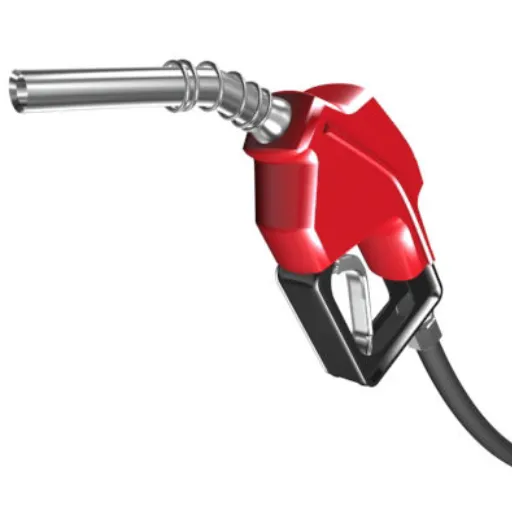
Gas pumps operate through a system of suction and fine delivery. Once the customer activates the pump by choosing a grade of fuel and placing the nozzle into the vehicle, a motor powers the suction mechanism. This suction draws fuel through earthmoving piping from an underground storage tank.
Fuel goes through a flow meter, which measures the exact quantity being dispensed. The measured fuel then goes through the hose and nozzle into the vehicle tank. The nozzle has an automatic shut-off device that will stop the flow of fuel once the tank is full. Thus, the process is fast and effective, and safety is maintained over the course of it.
How Gas Pump Nozzles Work
Gas pump nozzles work on a combination of mechanical and technological features that ensure a safe and efficient transfer of fuel. A great component is presented by the little venturi tube inside the nozzle. This tube indicates when the vehicle’s tank is full by setting up a vacuum effect, which is interrupted by the rise of fuel at the vent, with consequent pressure alteration, which actuates the diaphragm inside the nozzle to automatically interrupt fuel flow.
Engineering Precision: Further precision in engineering is incorporated in modern nozzles so as to reduce spillage and vapor emissions. Many gas stations today have incorporated within the nozzle meaningful vapor recovery systems that serve the purpose of capturing gasoline vapors, preventing their release into the atmosphere. This feature is particularly helpful from an environmental viewpoint.
Fuel is usually dispensed at about 10 gallons per minute in a majority of nozzles; commercial nozzles, however, can do 60 gallons per minute for the fastest delivery.
From a structural perspective, the materials for building these nozzles are highly durable, mixing stainless steel, aluminum, and advanced polymers to resist heavy use as well as exposure to fuel and weather. The changes in gas pump nozzle design represent an engineering statement on the environment, refueling safely and efficiently, and allowing for very-low emissions performance.
The Role of the Flow Meter
The flow meter is the main unit of the system of the gas pump, which measures the exact volume of fuel being dispensed in a transaction. The modern-day flow meters that use technological measuring mechanisms guarantee that any discrepancy would be within fractions of a percent, so that the customer has no less than the quantity of fuel he/she has paid for. Most flow meters used in fuel dispensers are of positive displacement and turbine types, which maintain high accuracy even when flow rates vary.
5-40gallons per minute capacity range for digital flow meters, accommodating both regular cars and big machinery
Recent technological advancements have witnessed the orchestration of flow meters with sensors and digital calibrating systems for real-time monitoring and adjustment. Some digital flow meters, for example, can be used from 5 to 40 gallons per minute, so that one can use them for both regular cars and big machinery. Further, such systems may compensate for temperature, thereby ensuring the consistency of measurement regardless of environmental conditions. This will ensure discrepancy-free refueling, which complies with the standard procedures, further enhancing customer trust and operational efficiency at fueling stations.
Understanding the Pump Nozzle Mechanism
Safety and efficiency in dispensing fuel depend upon several components working in synchrony. The shutoff valve is a primary element that prevents fuel overflow through a vacuum pressure system, which detects when the tank is full. The system uses a small air tube near the tip of the nozzle, which detects pressure changes as fuel is rising and shuts off the flow when queried.
| Vehicle Type | Flow Rate (Gallons/Minute) | Application |
|---|---|---|
| Passenger Cars | 5-10 | Standard refueling |
| Commercial Trucks | Up to 40 | Heavy machinery and fleet vehicles |
| Industrial Equipment | 40+ | Large-scale operations |
Thus, they can also have flow restrictors that let the fuel rate be controlled and precise, hence ensuring safety. Thus, a normal rate varies from 5 to 10 gallons per minute for passenger cars and as much as 40 gallons per minute for heavy machinery and commercial trucks.
Many nozzles are being designed with corrosion-resistant materials such as stainless steel or top-grade polymers, ensuring durability in changing environmental conditions. These materials can resist the corrosive effects of fuel chemicals, temperature variations, and heavy usage. Better ergonomic designs have also improved the handling of the nozzles while keeping them compatible with vapor recovery systems aimed at reducing emissions to the environment during the refueling process.
Once engineered to precision with a tough material, pump nozzle mechanisms go a long way to securing a safe, efficient, and sustainable operation of filling.
Safety Features in Gas Pumps
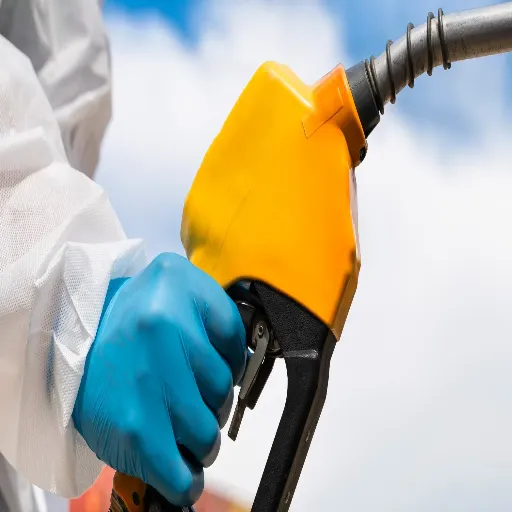
Gas pumps have various safety features put in place for the safe and efficient fueling of vehicles. Automatic shutoff valves will shut off fuel flow once the tank fills up, thus averting overflows. Breakaway couplings are necessary to stop any mishaps by permitting the nozzle to detach conveniently in case a vehicle drives away with the nozzle still attached. Moreover, many gas pumps come equipped with pressure sensors that can detect leaks and thereby reduce the risk of spills. They are also provided with emergency stop buttons that can immediately stop the flow of fuel in case there is an accident or fire. Together, these safety features make refueling safer for both the user and the environment.
The Importance of Automatic Shut-Off
Critical Safety Feature: Safety and efficiency are heavily prioritized during refueling operations. The automatic shutdown system acts as a protector to ensure that, once the tank is filled, fuel flow is halted, thereby preventing the overflow. This also limits any spilling that could have taken place. In the environmentally harmful instances of gasoline spills arising from overfilling, sensitive VOCs are released into the air and affect our soil, bodies, and water.
Shut-off systems prevent fuel or product loss and liability, saving the gas station operators money in operating costs. The newer generation utilizes sophisticated sensors that measure changes in tank pressure or fuel level in order to instantaneously activate the shut-off valve with high precision and consistency. Such mechanisms have now become standard features integrated into fuel dispenser designs, showing that the industry truly prioritizes safety, sustainability, and convenience to users.
Other Safety Mechanisms in Fuel Dispensers
Today’s fuel dispensers are equipped with various safety features to ensure operational security and environmental protection. A crucial piece of it is the vapor recovery system, which works against letting out harmful hydrocarbons into the atmosphere during a fuel-supplying procedure. Such systems pollute less by capturing and condensing fuel vapors and returning them to the underground tank or processing unit.
95%reduction in volatile organic compound emissions with modern vapor recovery technologies
Sciences have revealed that with modern technologies of vapor recovery, volatile organic compound emissions can be curtailed up to 95%, which is a step forward toward better air quality.
- Emergency Shut-off System: Immediately stops the flow of fuel in the event of an emergency seizure or an incident such as leakage, fire, or structural impact. These systems usually use shear valves, which automatically cut off the supply of fuel to prevent spillage and possible burning to comply with safety standards such as those outlined by the National Fire Protection Association (NFPA).
- Pressure and Temperature Monitoring: Important to avoid overfilling the tank and to protect the integrity of fuel storage. Measurements of tank conditions are taken continuously by sensors, which issue alerts or shut down if anything abnormal is detected, thus preventing hazardous situations from growing.
- Automated Transaction Cut-off Systems: In modern fuel dispensers may terminate the fueling process as soon as a vehicle tank is deemed full; in this way, the risk of overflowing is nullified, while the accurate dispensing of fuel is ensured.
Industry Commitment: These built-in technologies make a clear statement about prioritizing safety while also making the fuel station operations more efficient.
Preventing Vapor Release and Environmental Safety
In the very first place, during the actual process of fuel dispensing, any vapor emissions stray into the environment, with dire consequences for health and the environment. Contemporaneous fuel dispensers are thus usually equipped with systems that perform vapor recovery while airports dispense fuel. Such systems recover harmful fuel vapors emitted during refueling by channeling them back into underground storage tanks or transforming them into less harmful states, thereby greatly reducing the emissions of volatile organic compounds.
Environmental Impact: Results from recent research show that enhanced vapor recovery systems can absorb about 98% of the harmful vapors, thereby reducing air pollution and contributing to an increased quality of air. Furthermore, regulatory frameworks such as those implemented by the Environmental Protection Agency (EPA) in many regions set stricter controls for fuel vapor emissions, hence making it obligatory for fuel stations to implement such technology.
These measures decrease the emissions of greenhouse gases and create less risk of fire hazards due to the presence of volatile vapors.
Apart from emission control, another critical environmental safety concern that is strengthened by the adoption of advanced leak detection systems is early leak detection of any underground fuel tanks or pipelines to deter contamination of the soil or groundwater. These proactive provisions display a continuous commitment towards employing technology for a safe and sustainable fuel environment.
Types of Gas Pumps
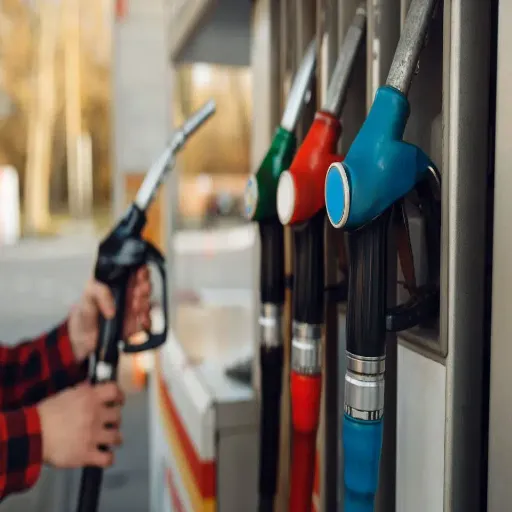
Gas pumps can be divided into the following categories:
Mechanical Pumps
Instruments of the past involved manual mechanisms for measuring and dispensing fuel. They are simple in design but do see lesser use these days due to technological improvements.
Electronic Pumps
Modern-day gas pumps with digital displays and internal electronic systems to ensure precise measurements, process payments, and are user-friendly.
Self-Serve Pumps
Provided to customers so they may fill gas in their vehicles on their own and pay directly at the pump.
Full-Serve Pumps
Traditionally, an attendant would operate them to assist with refueling and other services, typically found at some service stations.
High-Flow Pumps
Built for dispensing huge quantities and quickly dispensing another fuel for the heavy-duty stay-shift—towards trucks or machinery.
Versatility: Hence, different types serve different fuel provision requirements with emphasis placed on speed, easy usage, and reliability.
Comparing Petrol Pumps and Gasoline Dispensers
Petrol pumps and gasoline dispensers are often used without distinction, whereas differences exist in individual areas and applications. Both of these systems provide the machinery needed for vehicles to be refueled, while subtle differences exist between terminology, technology, and regional preferences.
Terminology and Regional Variations
“Petrol pump” is a term generally used in places like the United Kingdom, India, and other areas where “petrol” is the chosen word for fuel. Meanwhile, more common in the U.S. and Canada is the usage of a gasoline dispenser, just as the word gasoline is preferred for that specific type of fuel. These two terms are, however, for the same equipment used to store the fuel and dispense it to vehicles.
Technological Features
Modern petrol pumps and gasoline dispensers use high technology to ensure that the process is made more efficient and convenient for the consumer. These systems may have the following features: digital displays showing the current price and quantity, contactless payments, an automatic shut-off valve in case of overflow, etc. Smart fuel stations are, in fact, using computerized systems over the Internet for stock monitoring of fuel and so on to increase operational efficiency.
Usage Statistics
80%Of the fuel stations in North America are self-service, showing the trend toward automation
The need for speed and convenience has pushed the automated unattended fuel stations to grow in number worldwide. For example, more than 80% of the fuel stations in North America are self-service, whereas in areas like Europe, self-service and full-service are still mixed. The whole trend seems to be slowly leaning towards automation in most regions.
Environmental Concerns
Global efforts toward sustainability have led to the retrofitting of petrol pumps and fuel dispensers to cater to alternative fuels, such as biofuels and electric vehicle charging points. If this shift is to favor the greater acceptance of green sources of energy and be in tandem with international trends to reduce carbon emissions, then the aspect below must be understood:
From these aspects, it can be seen that while petrol pumps and gasoline dispensers are essentially the same, the modalities that distinguish one from the other in terms and advancement lie generally within regional preferences or technological trends.
Electric vs. Mechanical Gas Pumps
A mechanism that uses either an electric or mechanical drive to dispense the fuel has its own set of characteristics and technologies. Mechanical pumps, which were mostly used in the earlier decades of the 20th century, ran through manual gears, levers, and a much simpler mechanical system. In many cases, simple mechanical gas pumps do not offer multiscales for higher accuracy or any fancy features and are, therefore, only to be used for the dispensing of very general fuel-related purposes such as refueling trucks and other machinery, whose operations do not demand being particularly time-sensitive with respect to quality or precision of dispensing.
| Feature | Electric Pumps | Mechanical Pumps |
|---|---|---|
| Operation | Automated electrical system | Manual gears and levers |
| Accuracy | High precision with digital displays | Basic measurement capabilities |
| Features | Digital displays, payment systems, sensors | Simple mechanical components |
| Maintenance | Lower operational costs over time | Higher maintenance requirements |
| Applications | Modern fuel stations, EV charging integration | Basic fuel dispensing, industrial use |
On the other hand, electric gas pumps are the automated and electrical version of fuel dispensing. These pumps regulate the flow and dispensing of fuel via electromagnetic or electric motors and sensors. Here are some features enabling these pumps to ensure a safe and convenient way for dispensing fuel: digital display, automatic shut-off, and real-time data logging. Such pumps are also more amenable to showing frontiers in present alternative energy solutions, such as locating an interface with electric EV charging stations or other alternative fuel options.
Industry Evolution: Recent developments illuminate an increase in the demand for electric devices on account of efficiency-based and sustainability-oriented factors. Fuel stations worldwide have thus been, in general, converting to electric pumps for reasons of greater reliability and reduced operational costs over time. This trend has been particularly well noticed in areas that are developing along the lines of green energy, where stations employ smart technology to monitor fuel usage and reduce wastage. So, with their fine technology, electric pumps are the future of fuel dispensing and are expected to gradually evolve the energy infrastructure.
Innovations in Fuel Pump Technology
Advanced technologies in fuel pumps have changed the whole servicing experience for consumers and businesses alike. One such advancement involves automated payment systems that allow people to carry out payments through their mobile app or by RFID, thus going fully contactless. This amplifies convenience, cuts down on transaction duration, and serves the improve security measures.
25%increase in operational efficiency with IoT-enabled fuel management systems
Besides, fuel pumps now come with real-time monitoring systems! These systems use IoT devices to gather precise data on fuel levels, operational efficiency, and maintenance needs, assisting station operators in reducing downtime and managing resources proactively. Indeed, through the study, it was observed that using IoT-enabled fuel management may reduce maintenance costs by 20% and increase operational efficiency by 25%!
Renewable Energy Integration: Another innovation is the integration of renewable energy. Solar pumps are gaining importance, offering cost benefits and limiting the environmental impact, especially in remote areas. Recently, it has also been found that solar technology helps reduce the energy consumed at any station by around 30%; thus, such a technology significantly helps meet sustainability targets.
These suggest more developments toward smarter and more efficient fueling infrastructures with an environmentally conscious touch, following global trends seeking innovation in energy and ways to abate carbon emissions.
Environmental Considerations
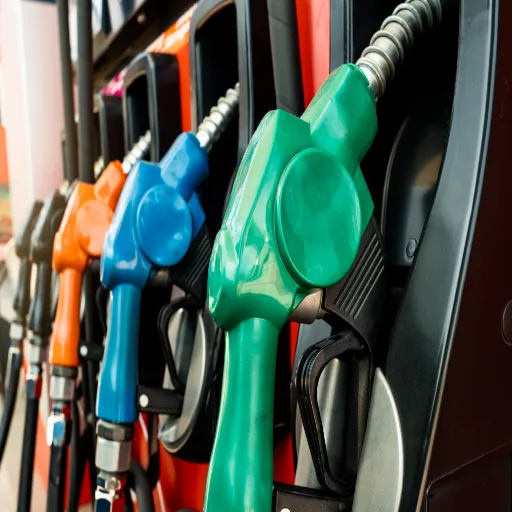
When discussing environmental matters, priority shall be given to cutting carbon emissions, resource conservation, and renewable-energy solutions. The implementation of solar—and other green alternatives that act in this manner—has principally consisted of reducing greenhouse gas emissions while reducing dependence on non-renewable energy sources. Further down the drugstore line, energy-efficient design and a reduction of waste within their infrastructure and operations are avoided to protect the environment. These activities contribute to the achievement of global sustainability goals and the maintenance of ecological balance for the eternal.
Impact of Gasoline Vapors
Gasoline vapors are composed mostly of volatile organic compounds (VOCs) and pose serious threats to the environment and human health. During the processes of fuel storage, transfer, and combustion, these vapors are outgassed, thereby enhancing air pollution and the generation of ground-level ozone. The ground-level ozone is a chief component of smog and can further affect and aggravate respiratory health issues, including conditions such as asthma and bronchitis.
17%Of the U.S. total VOC emissions come from gasoline-related sources according to the EPA
According to the environmental perspective of the Environmental Protection Agency (EPA), there is an opinion that VOCs released from gasoline vapors greatly contribute to greenhouse gas emissions. Gasoline-related sources actually accounted for nearly 17% of the U.S. total VOC emissions in the country. Globally, when escalated further in urban regions with heavy vehicular traffic, the scenario results in heightened air pollution, thereby spoiling the air quality and, in turn, risking public health.
Health Implications: Health consequences have been linked to gasoline vapour exposure. Long-term exposure causes brain-system disturbances, dizziness, nausea, and damage to important body organs like the liver and kidneys. Studies have shown that benzene gasoline vapour component a proven carcinogen, with longer exposure aggravating the cancer-causing risk.
This way, gasoline vapors will be regulated by vapor recovery systems combined with the reduction of evaporative emissions from the fuel systems of vehicles and the movement to alternative energy sources like electric vehicles. Environmental laws and public awareness, though, will be very important aspects to lessen the harmful effects that gasoline vapors are inflicting, both at the local and global levels.
Innovations in Petrol Pumps
Innovations in petrol pumps are mainly aimed at improving efficiency, safety, and environmental sustainability. For example, present-day pumps use vapor recovery to result in fewer emissions and release fewer harmful fumes into the atmosphere. In addition, other customer-convenient innovations include inside pumps with touchless systems and automatic refueling. With the advent of biofuel-capable pumps and a charging station for electric vehicles, we see a progression toward cleaner energy sources. This altogether exhibits an attempt at making fuel distribution more sustainable and user-centric.
Future of Fuel Dispenser Technology
Technology Integration: The future fuel dispenser technology would revolve around being sustainable, efficient, and adaptable to energy paradigm changes. With advanced technology, IoT concepts are foreseen to be introduced for real-time monitoring, along with predictive maintenance to reduce downtime and operational costs.
Artificial intelligence-powered digital interfacing could provide personalized services such as recommending fuel types and payment options based on user preferences. Technologies that are considered environmentally friendly will be given a further thrust, such as hydrogen dispensers, high-speed EV chargers, and compatible systems for synthetic and renewable fuels.
- IoT Integration: Real-time monitoring systems for predictive maintenance and resource optimization
- AI-Powered Interfaces: Personalized service recommendations and smart payment processing
- Alternative Fuel Support: Hydrogen dispensers and high-speed EV charging capabilities
- Contactless Technology: Mobile app integration and touchless payment systems
- Renewable Energy: Solar-powered stations and sustainable fuel options
Thus, from a consumer-centric view, there are further innovations like contactless payment and mobile app integration. These advancements aim to pull the industry towards achieving a common environmental goal while catering to the modern-day generation of technically savvy consumers.
Sustainable Future: The evolution of fuel dispenser technology represents a significant step toward creating a more sustainable, efficient, and user-friendly energy infrastructure that meets the demands of our changing world while protecting environmental resources for future generations.
Reference Sources
Frequently Asked Questions (FAQs)
How Does a Gas Pump Dispense Fuel into an Automobile?
Obviously, a gas pump dispenses fuel into an automobile with a complex set of components for precise fluid control. Once the customer lifts the nozzle and squeezes the handle, the pump starts functioning; the fuel is drawn from the underground storage tank(s). The fuel then traverses a series of pipes, which are carefully regulated by the flow meter, which measures the quantity dispensed from the nozzle into the vehicle’s fuel tank.
Describe the Key Components of a Gas Pump.
The main components of a gas pump are: the motor-driven pump, the fuel flow meter, the nozzle, and the valves. The pump is the actual mechanical device that moves fuel around with the use of a rotating impeller. The flow meter ensures that the correct amount of fuel is delivered. Safety mechanisms prevent fuel flow when the tank is considered full; they work in favor of preventing spills from occurring.
How Do Safety Features in Gas Pumps Work?
The gas pump has several safety features: the most important being the emergency shut-off system. This automatically shuts off the gasoline pump when the product air nozzle senses the tank is full. The system prohibits static electricity and causes emissions to be handled by vapor recovery systems according to environmental laws.
What Role Does Air Pressure Play in Gas Pump Operations?
Air pressure is the operation of gas pumps. Fuel in the storage tank is pumped up by air pressure. This pressure difference prevents vapor lock from being formed and ensures the gas flows steadily and reliably from the nozzle, which is much required for efficiency.
Can You Explain the Function of a Fuel Flow Meter?
The fuel flow meter is meant to measure the exact amount of fuel being dispensed in a sale. It works by a calibrated mechanism taking into consideration the viscosity and density of the fuel, so the readings are accurate. It credits buyers of precision fluid furlongs for what they receive, thereby supporting inventory control systems at gas stations.
What Are the Benefits of Lubricants for Use in Gas Pumps?
Lubricants ensure that gas pumps have an extended working life and operate efficiently. They primarily serve to reduce friction between moving parts, such as the rotating impeller, motor, and other components. This, in turn, alters the working capacity of the pump, perturbing it less with wear and tear, which can deliver fuel reliably over time.
How Does the Gas Nozzle Control the Flow of Fuel?
Gas nozzles come into the picture, ensuring smooth control of fuel. When the nozzle is lifted, the pump gets started. The nozzle is provided with a three-position hold-open device meant to keep the fuel flowing without constantly applying pressure to the handle. This device helps in the dispensing of a certain amount of fuel, thereby improving consumer convenience while ensuring safety.
What Are the Environmental Laws Affecting Gas Pump Activities?
About the environment, the gas pumps are to be controlled in such a manner as to inflict as little nuisance as possible with the process of fuel dispensing. These laws direct the implementation of vapor recovery systems to combat the emission of volatile organic compounds (VOCs). In addition to this, pumps should conform to standards of weights and measures to verify the accuracy in fuel delivery and prevent consumers from being overcharged.

